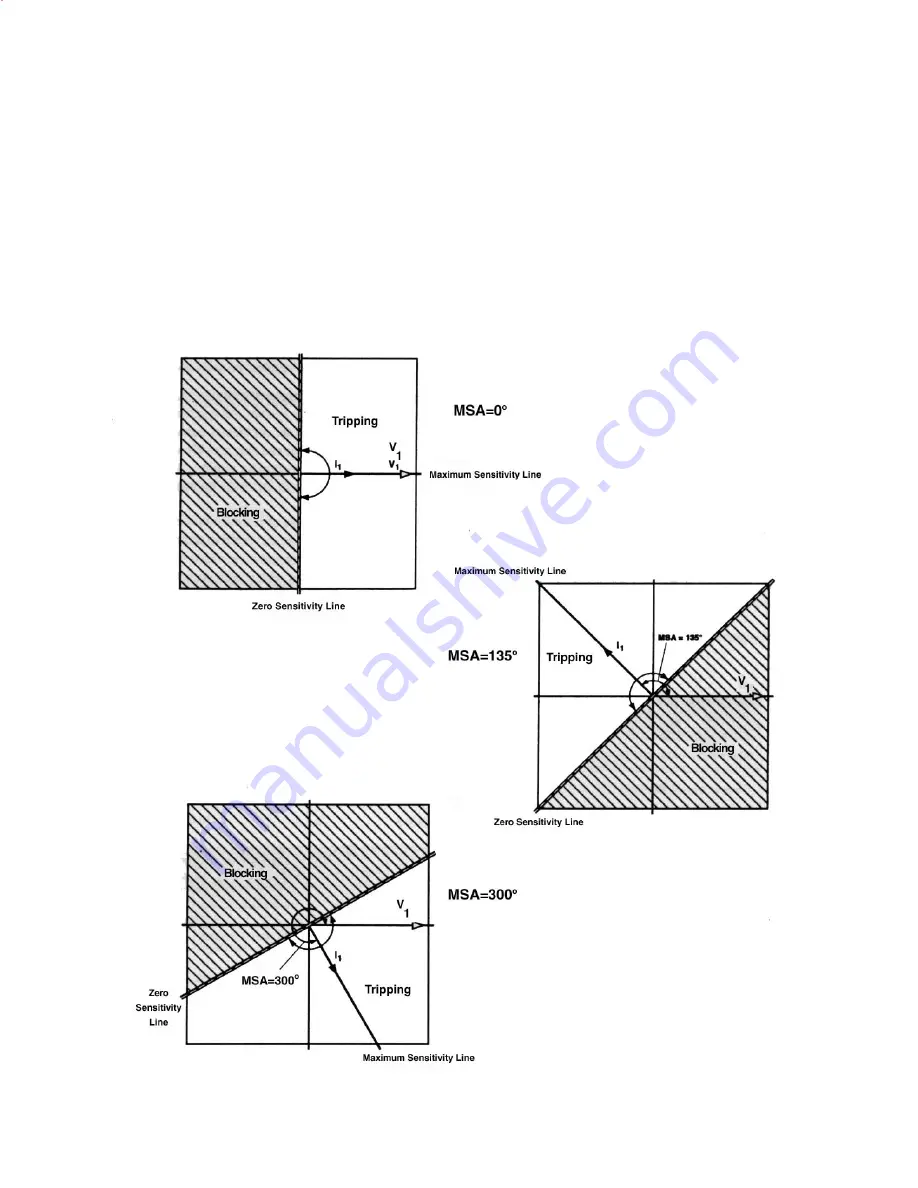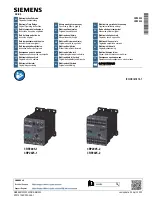
2–36
M-3520 Instruction Book
67 Phase Directional Overcurrent
For intertie protection applications, the phase
directional overcurrent relay allows greater
selectivity for utility system faults, since the
directional element can be set to look directly
towards the utility system. When the directional
element is disabled, the 67DT operates like an
instantaneous overcurrent. Likewise, the 67IT
function operates like an inverse time overcurrent
function (51) when its directional element is disabled.
Special high-speed processing occurs when the
67DT time delay is set to minimum (1 cycle). A
three-phase option on the 67DT function allows the
67DT to only respond to 3-phase faults. When three-
phase detection is disabled, and any one phase
current exceeds pickup, timing will begin. The
directional elements are polarized from positive
sequence voltage and positive sequence current.
In order to obtain maximum sensitivity for fault
currents, the directional element is provided with a
maximum sensitivity angle adjustment (MSA). This
setting is common to both the 67DT and 67IT
elements. The directional detection algorithm is
equipped with a pre-fault voltage memory of eight
cycles to provide correct directional discrimination
for bolted three-phase faults.
Figure 2-26
Phase Directional Overcurrent (67) Trip Characteristics
Summary of Contents for M-3520
Page 1: ...Instruction Book M 3520 Intertie Protection Relay ...
Page 83: ...2 50 M 3520 Instruction Book This Page Left Intentionally Blank ...
Page 95: ...M 3520 Instruction Book 3 12 This Page Intentionally Left Blank ...
Page 133: ...M 3520 Instruction Book 5 12 This Page Intentionally Left Blank ...
Page 195: ...A 20 M 3520 Instruction Book This Page Intentionally Left Blank ...
Page 213: ...D 12 M 3520 Instruction Book This Page Intentionally Left Blank ...









































